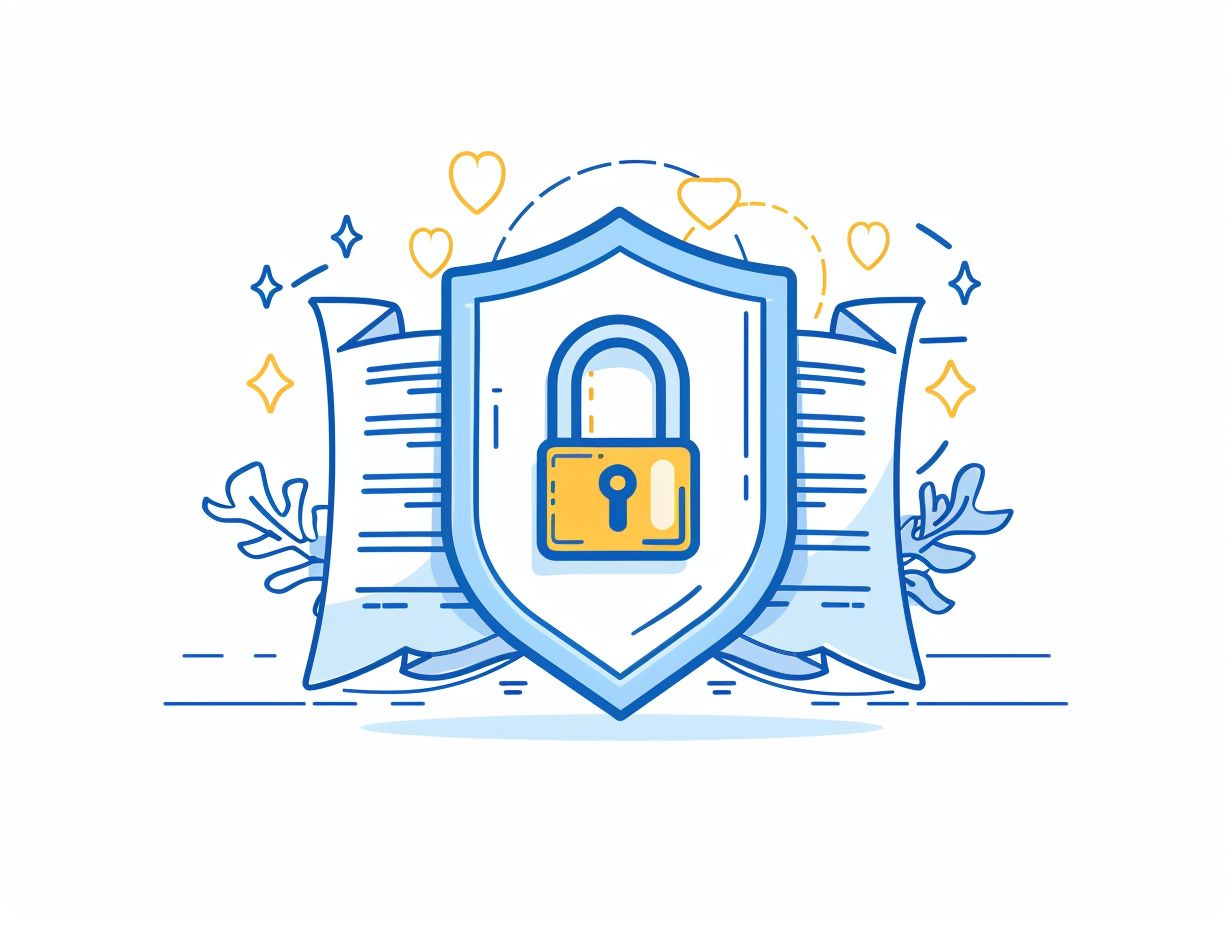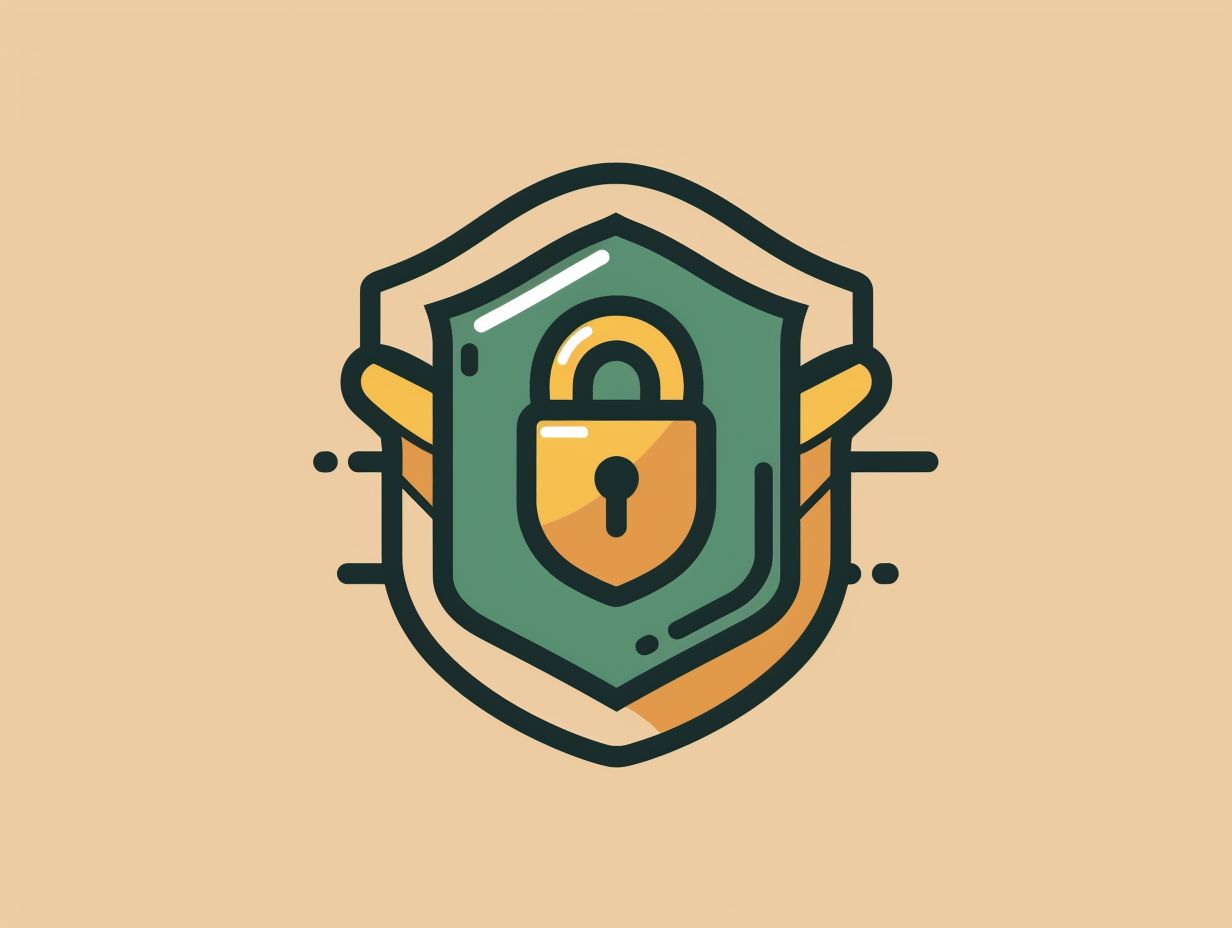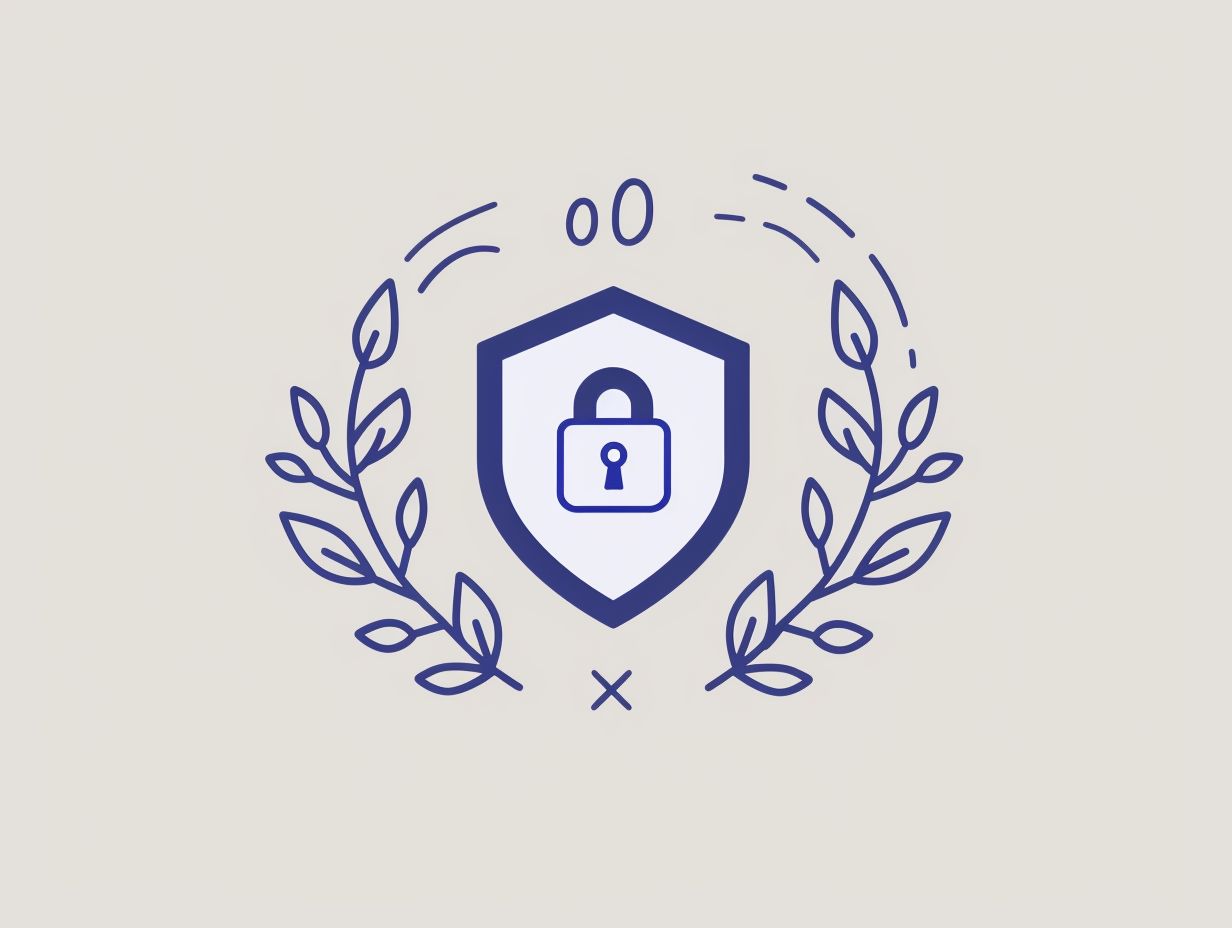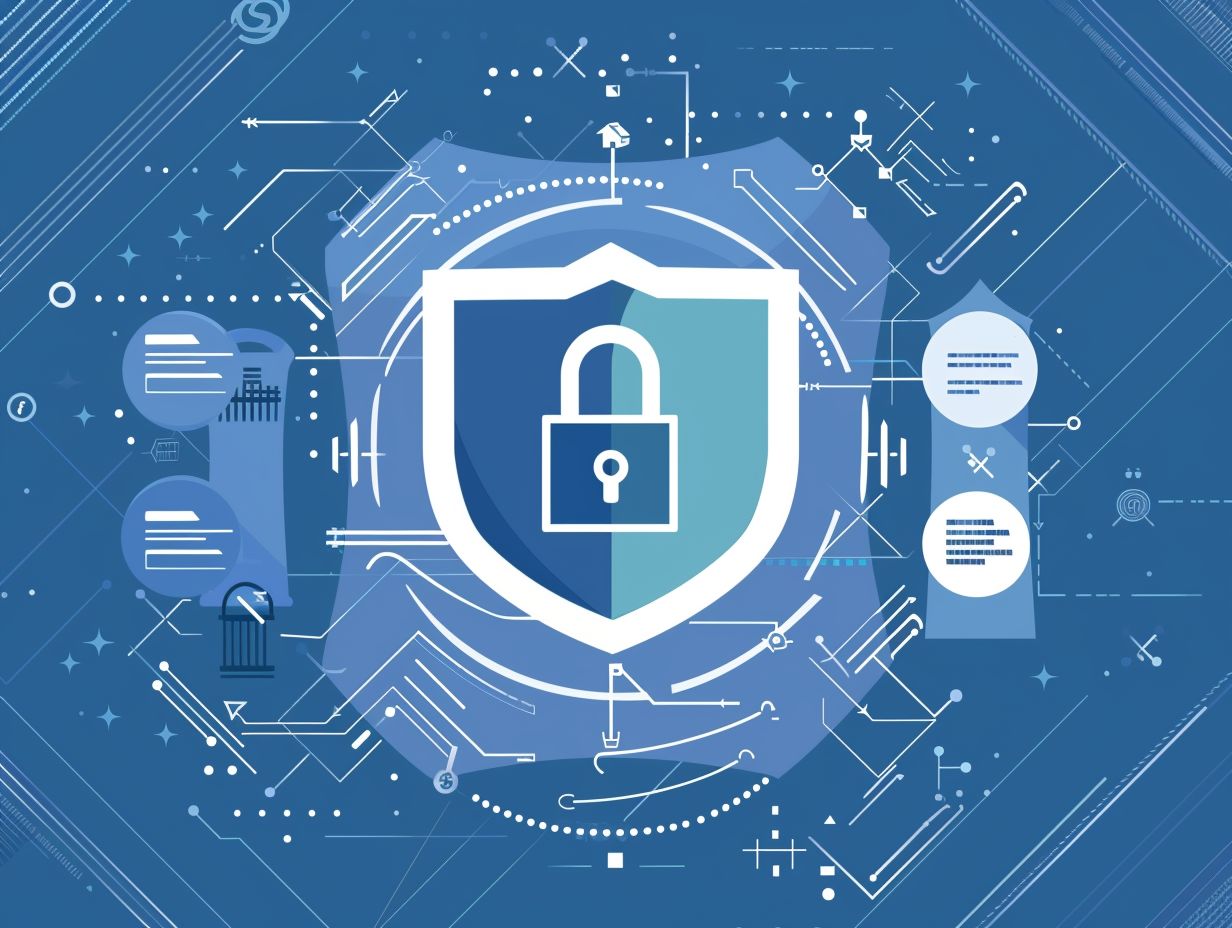If you are seeking to advance your career in software security, the EC-Council’s Certified Secure Software Lifecycle Professional (CSSLP+) certification may present a valuable opportunity for professional growth.
This article will examine the importance of CSSLP+ in the realm of software security, focusing on crucial topics like Secure Software Development Lifecycle (SSDLC) and Threat Modeling. Furthermore, it will discuss the advantages associated with earning this certification.
Additionally, the requirements and examination preparation process necessary for obtaining CSSLP+ certification will be detailed to assist you in your pursuit of this credential.
Key Takeaways:

Overview of the Certification
The Certified Secure Software Lifecycle Professional (CSSLP) certification is ideal for professionals in the software development field with a focus on application security. This certification validates expertise in secure software concepts and Secure Software Lifecycle Management, encompassing critical domains necessary for secure software development. Achieving the CSSLP certification from ISC2 demonstrates a professional’s dedication to upholding secure software practices throughout the Software Development Lifecycle (SDLC).
The CSSLP exam is structured with multiple-choice questions that center on topics like secure software requirements, design, testing, and quality assurance. To qualify for the certification, candidates must have a minimum of four years of cumulative, full-time paid work experience in at least one of the eight domains addressed in the exam, including secure software concepts, security software requirements, design, implementation/coding, and others.
Earning the CSSLP certification not only bolsters one’s credibility but also opens up new career opportunities within the fast-paced IT and software development industries.
Why CSSLP+ is Important for Software Security
CSSLP+ plays a critical role in enhancing software security by equipping you with advanced skills and training to identify and mitigate software vulnerabilities effectively. As a certified Secure Software Lifecycle Professional, you gain the expertise needed to implement secure coding practices, reduce security risks, and ensure the confidentiality and integrity of software applications.
The CSSLP+ certification enables you to adopt a proactive approach towards addressing potential security threats throughout the software development lifecycle. By incorporating security measures from the initial stages of application design and development, CSSLP professionals can prevent costly security breaches and data leaks. For instance, in a recent case study, a software company saw a significant decrease in security incidents post CSSLP+ implementation, leading to enhanced customer trust and a strong competitive edge in the market. This certification not only enhances your career prospects but also contributes to building more secure and reliable software products for users worldwide.
The Need for Advanced Security Lifecycle Management
The evolving landscape of software development highlights the critical necessity for advanced Security Lifecycle Management to effectively combat emerging security threats and vulnerabilities. Secure Software Lifecycle Management practices are crucial to ensure that software applications are developed, deployed, and maintained securely throughout their lifecycle.
By integrating Security Lifecycle Management into your software development process, your organization can proactively address potential security issues from the initial stages. This approach involves implementing secure coding practices, conducting regular security assessments, and ensuring timely patching of vulnerabilities.
Secure Software Lifecycle Management plays a pivotal role in fostering a security-first mindset among developers and stakeholders, emphasizing the importance of security from design to deployment. With the ever-increasing cyber threats, adhering to secure practices is paramount in safeguarding sensitive data and maintaining the integrity of software systems.
Key Concepts of CSSLP+
The key concepts of CSSLP encompass a comprehensive understanding of Secure Software Concepts, Architecture, Design, Implementation, Testing, Deployment, Operations, Maintenance, and Supply Chain.
When focusing on Secure Software Architecture, professionals like yourself learn to design systems with security in mind from the ground up, considering factors such as access controls, encryption, authentication mechanisms, and secure coding practices.
Testing plays a crucial role in identifying vulnerabilities and ensuring that security measures are effective. For example, a case study might highlight how rigorous testing during the development phase helped uncover critical security flaws before deployment, ultimately saving the organization from potential breaches and data loss.
Deployment practices emphasize secure configurations and proper implementation to protect software applications from threats.
Secure Software Development Lifecycle (SSDLC)

An integral part of CSSLP is the Secure Software Development Lifecycle (SSDLC), which encompasses various phases such as Secure Software Requirements, Architecture and Design, Implementation, Testing, Deployment, Operations, Maintenance, and Supply Chain. Implementing SSDLC ensures that software is developed with security considerations at every stage.
These phases of SSDLC play a crucial role in ensuring that security is incorporated into every aspect of software development. In the Secure Software Requirements phase, security requirements are identified and documented, setting the foundation for a secure design. The Architecture and Design phase focuses on creating a secure structure that aligns with the specified security requirements. During Implementation, secure coding practices are applied to prevent vulnerabilities. Testing involves rigorous security testing to identify and mitigate security weaknesses. Deployment ensures secure installation and configuration, while Operations and Maintenance involve monitoring and updating security measures. The Supply Chain phase addresses security risks that may arise from third-party components.
By following best practices, using methodologies like the Waterfall or Agile model, and employing tools such as Static Application Security Testing (SAST) and Dynamic Application Security Testing (DAST), organizations can effectively implement SSDLC and create software that upholds the highest security standards.
Threat Modeling
Threat modeling is an essential process in CSSLP that involves identifying and assessing potential threats and vulnerabilities in software applications. By conducting thorough threat modeling exercises, CSSLP professionals can proactively address security risks and implement effective security testing and validation measures.
This systematic approach helps you understand the security posture of software systems by analyzing potential attack vectors and weaknesses. By mapping out potential threats, such as unauthorized access, data breaches, or injection attacks, developers can design robust security controls to mitigate these risks.
Common threat modeling techniques include STRIDE (Spoofing, Tampering, Repudiation, Information Disclosure, Denial of Service, and Elevation of Privilege), DREAD (Damage, Reproducibility, Exploitability, Affected Users, and Discoverability), and Attack Trees that provide structured frameworks for evaluating threats and their potential impact on software security.
Security Testing and Validation
Security testing and validation are essential components of CSSLP that focus on verifying the effectiveness of security controls, identifying vulnerabilities, and ensuring the overall security posture of software applications. Through rigorous testing and validation processes, CSSLP professionals can detect and remediate security weaknesses before deployment.
When you employ a variety of methodologies such as static analysis, dynamic analysis, and penetration testing, security testing evaluates software systems for potential threats and weaknesses. This proactive approach helps in fortifying applications against cyber attacks and data breaches. By utilizing tools like code scanners and vulnerability assessment software, CSSLP practitioners can conduct thorough evaluations to spot security flaws and implement necessary security measures. This plays a pivotal role in bolstering software security and enhancing trust among users by ensuring that applications meet stringent security requirements.
Benefits of CSSLP+
Achieving CSSLP+ certification offers you a wide range of advantages, such as increased opportunities for career progression and various organizational benefits. Professionals with CSSLP credentials are highly sought after for their expertise in secure software development practices, making them valuable assets within the information technology sector.
They possess the skills needed to assess potential security threats and vulnerabilities in software systems, ensuring that applications are designed with robust security measures in place. By obtaining CSSLP+ certification, professionals showcase their dedication to maintaining industry standards and best practices, which can result in greater trust from clients and stakeholders. The organizational advantages of having CSSLP professionals within your team include a bolstered security posture, compliance with regulations, and the implementation of more efficient software development procedures.
Career Advancement and Job Opportunities
The CSSLP certification offers you substantial career growth opportunities by showcasing your proficiency in secure software development. Holding CSSLP credentials can open doors to roles like Software Architect, Engineer, or Developer, while also enabling you to pursue Continuing Professional Education for staying updated on industry trends.
Employers highly value the CSSLP designation as it demonstrates a dedication to implementing secure coding practices and understanding the intricacies of software development. As a Software Architect, you would be tasked with designing secure software systems, whereas Engineers focus on incorporating security measures into the software. Developers, on the other hand, play a pivotal role in writing secure code and minimizing vulnerabilities.
By engaging in ongoing learning through CPE activities, CSSLP-certified professionals can enhance their skills, ensuring they are prepared to tackle evolving cybersecurity threats and adhere to secure software development best practices.
Organizational Benefits

Organizations that employ CSSLP-certified professionals can benefit significantly, as these professionals ensure compliance with industry standards such as ISO/IEC 17024 and DoD Directive 8570.1. CSSLP professionals play a crucial role in improving the security posture of organizations, thereby becoming valuable assets in protecting sensitive information and mitigating security risks.
These certified professionals are essential in ensuring organizations adhere to stringent cybersecurity standards, which helps reduce the potential risks of breaches and data theft. By implementing secure software development practices, CSSLP experts assist in strengthening critical assets, preventing vulnerabilities, and effectively responding to evolving cyber threats. Their expertise in secure coding principles and best practices enables organizations to develop resilient systems capable of withstanding sophisticated attacks and meeting regulatory requirements.
How to Obtain CSSLP+ Certification
To achieve CSSLP+ certification, you need to meet specific requirements related to work experience, training, and passing the CSSLP exam. You must demonstrate expertise in secure software development practices across various domains and prepare thoroughly for the certification exam to confirm your skills and knowledge in software security.
A critical step in obtaining CSSLP+ certification is ensuring that you have a minimum of four years of cumulative work experience in at least one of the domains of the CSSLP Common Body of Knowledge (CBK). It is crucial to emphasize that your work experience should be pertinent to software development and security. You should also comply with the (ISC) Code of Ethics and complete the endorsement process.
Understanding the domains covered in the CSSLP exam, such as secure software requirements, design, implementation, testing, and cryptography, is vital for effective exam preparation. Make sure to familiarize yourself with these domains to enhance your readiness for the certification exam.
Requirements and Exam Preparation
For obtain CSSLP certification, you must fulfill specific requirements. This includes meeting a minimum number of years of work experience in relevant domains and successfully completing the CSSLP exam. Adequate preparation for the exam is crucial to ensure success in attaining CSSLP certification and verifying expertise in secure software development practices.
Meeting the work experience prerequisites for CSSLP entails having a minimum of four years of full-time experience in areas such as secure software development, cryptography, and security architecture. The CSSLP exam consists of 125 multiple-choice questions that evaluate candidates on a variety of security concepts, principles, and methodologies. For prepare effectively for the exam, it is recommended that candidates utilize study guides, practice tests, and online resources offered by official ISC2 partners.
During exam preparation, it is important to focus on key areas such as secure software concepts, secure software requirements, and secure software maintenance.
Frequently Asked Questions
What is EC-Council’s Certified Secure Software Lifecycle Professional (CSSLP+)?
EC-Council’s Certified Secure Software Lifecycle Professional (CSSLP+) is an advanced certification for software developers, engineers, and security professionals that focuses on advanced software security lifecycle management techniques and best practices.
What does the CSSLP+ certification cover?

The CSSLP+ certification covers topics such as secure software concepts, security design and architecture, secure coding practices, secure testing, and software deployment, operations, and maintenance.
Who is this certification for?
This certification is ideal for software developers, engineers, architects, project managers, and security professionals who are involved in the software development lifecycle and want to enhance their knowledge and skills in advanced software security practices.
How can I prepare for the CSSLP+ exam?
You can prepare for the CSSLP+ exam by attending training courses, studying the official study guide, and practicing with sample exam questions. It is also recommended to have at least 4 years of experience in the software development lifecycle before attempting the exam.
What are the benefits of becoming a CSSLP+ certified professional?
Becoming a CSSLP+ certified professional can enhance your credibility and marketability as an expert in advanced software security lifecycle management. It can also open up opportunities for higher-paying job roles and career advancement.
Is there a recertification requirement for CSSLP+?
Yes, CSSLP+ certification holders are required to recertify every 3 years by earning Continuing Professional Education (CPE) credits or by retaking the certification exam. This ensures that certified professionals stay up-to-date with the latest advancements and best practices in the field of software security.
